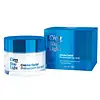What's inside
What's inside
 Key Ingredients
Key Ingredients

 Benefits
Benefits

 Concerns
Concerns

 Ingredients Side-by-side
Ingredients Side-by-side

Water
Skin ConditioningBenzoic Acid
MaskingButyrospermum Parkii Butter
Skin ConditioningC12-16 Alcohols
EmollientCitric Acid
BufferingCoco-Caprylate/Caprate
EmollientFructose
HumectantGlycerin
HumectantHydrogenated Lecithin
EmulsifyingJuglans Regia Seed Extract
Skin ConditioningOryza Sativa Starch
AbsorbentPalmitic Acid
EmollientParfum
MaskingPhenethyl Alcohol
MaskingPotassium Sorbate
PreservativePrunus Amygdalus Dulcis Oil
Skin ConditioningSodium Hydroxide
BufferingSodium Metabisulfite
AntioxidantSorbic Acid
PreservativeTocopheryl Acetate
AntioxidantXanthan Gum
EmulsifyingWater, Benzoic Acid, Butyrospermum Parkii Butter, C12-16 Alcohols, Citric Acid, Coco-Caprylate/Caprate, Fructose, Glycerin, Hydrogenated Lecithin, Juglans Regia Seed Extract, Oryza Sativa Starch, Palmitic Acid, Parfum, Phenethyl Alcohol, Potassium Sorbate, Prunus Amygdalus Dulcis Oil, Sodium Hydroxide, Sodium Metabisulfite, Sorbic Acid, Tocopheryl Acetate, Xanthan Gum
Allantoin
Skin ConditioningWater
Skin ConditioningAsiatic Acid
Skin ConditioningAsiaticoside
AntioxidantCaprylic/Capric Triglyceride
MaskingCI 42090
Cosmetic ColorantCreatine
Skin ConditioningCyclohexasiloxane
EmollientCyclopentasiloxane
EmollientEthylhexylglycerin
Skin ConditioningFaex
Skin ConditioningGlycerin
HumectantGlyceryl Caprylate
EmollientGlyceryl Stearate
EmollientHydrogenated Polydecene
EmollientHydrogenated Starch Hydrolysate
HumectantIsododecane
EmollientLactic Acid
BufferingMadecassic Acid
Skin ConditioningParfum
MaskingPolyglyceryl-3 Methylglucose Distearate
EmulsifyingPotassium Azeloyl Diglycinate
Skin ConditioningSodium Phosphate
BufferingSorbitan Isostearate
EmulsifyingSqualane
EmollientStearyl Alcohol
EmollientTocopheryl Acetate
AntioxidantAllantoin, Water, Asiatic Acid, Asiaticoside, Caprylic/Capric Triglyceride, CI 42090, Creatine, Cyclohexasiloxane, Cyclopentasiloxane, Ethylhexylglycerin, Faex, Glycerin, Glyceryl Caprylate, Glyceryl Stearate, Hydrogenated Polydecene, Hydrogenated Starch Hydrolysate, Isododecane, Lactic Acid, Madecassic Acid, Parfum, Polyglyceryl-3 Methylglucose Distearate, Potassium Azeloyl Diglycinate, Sodium Phosphate, Sorbitan Isostearate, Squalane, Stearyl Alcohol, Tocopheryl Acetate
Ingredients Explained
These ingredients are found in both products.
Ingredients higher up in an ingredient list are typically present in a larger amount.
Glycerin is already naturally found in your skin. It helps moisturize and protect your skin.
A study from 2016 found glycerin to be more effective as a humectant than AHAs and hyaluronic acid.
As a humectant, it helps the skin stay hydrated by pulling moisture to your skin. The low molecular weight of glycerin allows it to pull moisture into the deeper layers of your skin.
Hydrated skin improves your skin barrier; Your skin barrier helps protect against irritants and bacteria.
Glycerin has also been found to have antimicrobial and antiviral properties. Due to these properties, glycerin is often used in wound and burn treatments.
In cosmetics, glycerin is usually derived from plants such as soybean or palm. However, it can also be sourced from animals, such as tallow or animal fat.
This ingredient is organic, colorless, odorless, and non-toxic.
Glycerin is the name for this ingredient in American English. British English uses Glycerol/Glycerine.
Learn more about GlycerinParfum is a catch-all term for an ingredient or more that is used to give a scent to products.
Also called "fragrance", this ingredient can be a blend of hundreds of chemicals or plant oils. This means every product with "fragrance" or "parfum" in the ingredients list is a different mixture.
For instance, Habanolide is a proprietary trade name for a specific aroma chemical. When used as a fragrance ingredient in cosmetics, most aroma chemicals fall under the broad labeling category of “FRAGRANCE” or “PARFUM” according to EU and US regulations.
The term 'parfum' or 'fragrance' is not regulated in many countries. In many cases, it is up to the brand to define this term.
For instance, many brands choose to label themselves as "fragrance-free" because they are not using synthetic fragrances. However, their products may still contain ingredients such as essential oils that are considered a fragrance by INCI standards.
One example is Calendula flower extract. Calendula is an essential oil that still imparts a scent or 'fragrance'.
Depending on the blend, the ingredients in the mixture can cause allergies and sensitivities on the skin. Some ingredients that are known EU allergens include linalool and citronellol.
Parfum can also be used to mask or cover an unpleasant scent.
The bottom line is: not all fragrances/parfum/ingredients are created equally. If you are worried about fragrances, we recommend taking a closer look at an ingredient. And of course, we always recommend speaking with a professional.
Learn more about ParfumTocopheryl Acetate is AKA Vitamin E. It is an antioxidant and protects your skin from free radicals. Free radicals damage the skin by breaking down collagen.
One study found using Tocopheryl Acetate with Vitamin C decreased the number of sunburned cells.
Tocopheryl Acetate is commonly found in both skincare and dietary supplements.
Learn more about Tocopheryl AcetateWater. It's the most common cosmetic ingredient of all. You'll usually see it at the top of ingredient lists, meaning that it makes up the largest part of the product.
So why is it so popular? Water most often acts as a solvent - this means that it helps dissolve other ingredients into the formulation.
You'll also recognize water as that liquid we all need to stay alive. If you see this, drink a glass of water. Stay hydrated!
Learn more about Water